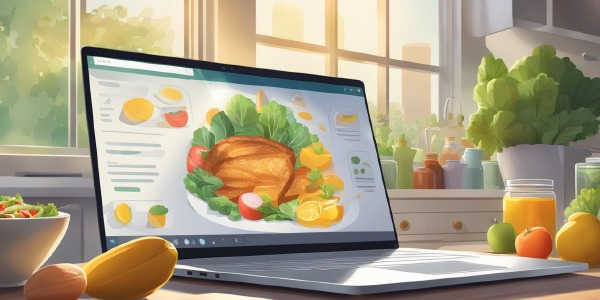Beginner's Guide to Gardening: Easy Steps to Cultivating Fresh Herbs and Veggies
Gardening is a rewarding activity that allows you to connect with nature and enjoy the simple joy of growing your own food. Starting a vegetable garden might seem daunting for beginners, but with the right guidance, it can be an enjoyable and successful endeavor. From selecting the right location for your garden to choosing suitable vegetables and herbs, the journey begins with a solid plan and a few fundamental insights into the art of gardening.

As you embark on this green adventure, remember that caring for your garden is a continual process. The right amount of water, sunlight, and fertilizer, along with regular maintenance, ensures your herbs and vegetables thrive. Not everyone has the luxury of a large garden space, but this shouldn’t deter you. Container and small space gardening is a fantastic solution for cultivating a lush vegetable garden in tighter spaces, allowing you to grow an assortment of herbs and vegetables right at your doorstep.
Key Takeaways
- Starting a vegetable garden is accessible for beginners with proper planning and care.
- Regular maintenance and understanding the needs of your plants are crucial for a thriving garden.
- Container gardening offers a versatile option for growing vegetables and herbs in limited spaces.
Planning Your Vegetable Garden

Embarking on your vegetable gardening journey requires thoughtful preparation. Your success hinges on where you plant, what you grow, and how you nurture your garden.
Choosing the Right Location
To ensure your vegetables and herbs thrive, find a spot that receives at least 6-8 hours of sunlight per day. Your outdoor space should be level to prevent water from pooling in one area. If you’re limited on space, consider raised beds or containers, which can also help manage soil quality and drainage effectively.
Understanding Your Soil
Your garden’s foundation is the soil. Aim to use fertile soil mixed with compost to introduce essential nutrients. Improve drainage and soil quality by incorporating worm castings or manure. Performing a soil test can reveal the need for additional amendments, like lime or fertilizer.
Selecting Vegetables and Herbs
Prioritize vegetables and herbs that suit your environment and taste preferences. Consult seed packets for spacing and depth requirements. Mix fast-growing crops with longer-season plants to maximize your garden’s yield. Consider both annuals and perennials to keep your garden productive year-round.
Garden Layout and Design
Your layout directly impacts plant health and yield. Space your rows or raised beds evenly to allow for sunlight and air circulation. Vertical gardening can be a space-saving solution for climbing plants like tomatoes and beans. Incorporate pathways for easy access and maintenance.
Gardening Equipment Essentials
Invest in basic tools, such as a spade, hoe, rake, and watering can or hose. Choose garden containers with adequate drainage if you’re planning a container garden. Quality gloves and a kneeling pad can make the experience more comfortable.
Starting Seeds
You can start seeds in seed trays or small containers. Sow seeds according to the depth specified on the seed packets. Maintain consistent moisture and warmth to encourage germination. Label seeds clearly to keep track of what you have sown.
Transplanting Seedlings
Once seedlings have several true leaves, they’re ready for transplanting. Harden off plants by gradually acclimating them to outdoor conditions over the course of a week. Carefully transplant to avoid disturbing young roots.
Utilizing High-Quality Supplies
Using high-quality seeds and supplies sets the stage for a luscious garden. Apply mulch around your plants to retain moisture and suppress weeds. Nourish your garden with an appropriate blend of fertilizer to support healthy growth throughout the season.
Caring for Your Garden

Proper care is crucial to ensure your garden thrives. This includes regular watering, soil maintenance, and pest control.
Watering Techniques
Frequency and Quantity: Water your garden in the early morning or late afternoon to minimize evaporation. Generally, your garden will need about an inch of water per week, either from rainfall or watering.
- Deep Watering: Encourages deep root growth. Aim to water deeply and less frequently rather than shallow and often.
- Irrigation Systems: Drip irrigation or soaker hoses provide water directly to the roots and help conserve water.
Fertilization and Soil Health
Soil Testing: Before fertilizing, test your soil to determine the specific needs of your garden.
- Organic Matter: Enrich your soil with compost or well-rotted manure to add nutrients.
- Fertilizers: Use a balanced fertilizer with nitrogen, phosphorus, and potassium. Apply according to the soil test recommendations.
Weed Management
Regular Weeding: Remove weeds before they seed to reduce future weeding.
- Mulch: Use mulch around your plants to suppress weeds and retain soil moisture.
Pest and Disease Control
Regular Inspection: Examine your plants regularly for signs of pests or disease.
- Natural Remedies: Use barriers like netting to keep pests out and apply neem oil or insecticidal soap for infestations.
Gardening Maintenance Routines
Pruning: Trim dead or overgrown branches to promote healthy growth.
- Staking and Support: Provide support for tall plants or those heavy with fruit.
Companion Planting Benefits
- Pest Control: Certain plants can naturally repel garden pests.
- Improved Growth: Some plants grow better together, aiding each other’s nutrient uptake, like basil and tomatoes.
Succession Planting and Crop Rotation
- Succession Planting: Plant new crops in intervals to extend your harvest season.
- Crop Rotation: Rotate crops year to year to prevent soil nutrient depletion and disease buildup.
Harvesting and Storing Produce
- Proper Timing: Harvest your produce when it’s ripe for the best flavor.
- Storage Techniques: Store your fresh produce properly to extend its shelf life, using methods like canning, freezing, or root cellaring.
Container and Small Space Gardening

Starting your own container garden is a versatile and rewarding way to grow herbs and vegetables, especially when you’re limited on space. Ideal for urban settings or small patios, container gardening allows you to cultivate fresh produce in raised beds or pots of various sizes and materials. By carefully selecting your containers, utilizing innovative space-saving techniques, and maintaining soil quality with proper fertilization, your small area can yield a surprisingly abundant harvest.
Choosing Containers
When selecting containers for your garden, consider the size, material, and drainage capabilities. A good rule of thumb is to choose pots that are at least 12 inches deep to accommodate the roots of most herbs and vegetables. The container material can vary from plastic, terracotta, to even recycled materials like wooden crates. Drainage holes are crucial to prevent water logging and ensure healthy root growth.
- Plastic pots are lightweight and inexpensive but can deteriorate over time.
- Terracotta pots are heavier and provide good moisture regulation but may break in freezing temperatures.
- Wooden containers offer a rustic look and are good insulators of soil temperature.
Maximizing Limited Space
Maximize your growing area by thinking vertically and creatively. Vertical gardening techniques such as trellises, hanging baskets, and tiered plant stands can increase your growing area without expanding your footprint. This is particularly useful in an urban garden context.
- Stack pots or use shelving to layer plants at different heights.
- Consider hanging planters for herbs and shallow-rooted vegetables.
- Raised beds can be made in narrow configurations to fit tight spaces while providing ample soil depth.
Container Soil and Fertilization
For your container garden to thrive, ensure the use of fertile soil with good aeration and drainage. A mix specifically designed for container use often yields the best results. Regular application of fertilizer will replenish nutrients that are quickly depleted in a confined soil volume.
- Use a high-quality potting mix rather than garden soil from the yard.
- Integrate slow-release fertilizers or compost into the potting mix for sustained nutrition.
- Monitor soil moisture and nutrient levels, as container soil can dry out and become less fertile more quickly than ground soil.
Growing Popular Vegetables and Herbs

Embarking on a gardening journey enables you to turn your backyard into a tapestry of flavors with vegetables and herbs that are staples in the kitchen. It’s quite rewarding to grow your own food, as you ensure freshness while reducing your carbon footprint.
Tomatoes
Tomatoes are a versatile crop that thrive in warm conditions. When planting tomatoes, choose a spot with at least 6 hours of sunlight daily. Start with tomato plant seedlings and support them with stakes or cages, as they can grow quite tall. Water consistently, especially as the fruits develop, for a juicy harvest.
Leafy Greens
For a continuous supply of leafy greens like lettuce, spinach, and kale, opt for a cool spot in your garden with partial shade. Sow seeds shallowly in rich, well-draining soil and water regularly. Spinach and lettuce can be harvested as soon as they reach a desirable size by picking the outer leaves.
Root Vegetables
Root vegetables such as radishes, carrots, and beetroot excel in loose, deep soil that allows them to expand underground. Space is important, so thin seedlings early to avoid crowding. Radishes are fast growers, often ready to eat in just a few weeks, while carrots and beetroot may take a couple of months.
Legumes
Beans and peas enrich the soil with nitrogen, making them beneficial for your garden. They require a trellis or some form of support for their tendril grips. Runner beans are particularly prolific, and regular harvesting promotes more pods to form. Sow seeds directly into moist soil after the last frost.
More Vegetables and Fruits
Branch out to other vegetables like cucumbers, peppers, summer squash, or courgettes. These tend to need more space and full sun to flourish. Cucumbers and zucchini can sprawl or climb, so consider vertical gardening. For chilies and peppers, provide a warm start indoors before transplanting.
Herbs for Flavor and Aroma
Herbs such as basil, cilantro, and mint are perfect for adding a fresh zing of flavor to dishes. Plant these in well-drained soil and clip regularly to encourage new growth. Basil loves the sun, while cilantro prefers cooler conditions. Mint is a vigorous grower and may be best in its own container to prevent it from taking over your garden space.
Advanced Gardening Tips

In this section, you’ll learn how to take your gardening to the next level using various ecological methods and principles. From organic gardening to innovative water systems, you’ll discover how to extend the growing season and foster a sustainable practice that contributes to community well-being. Through these insights, your garden can become a source of enjoyment and stress relief.
Organic Gardening Principles
To adopt organic gardening practices, focus on enriching your soil with compost and using natural pest control techniques. This might include introducing beneficial insects like ladybugs. Utilize crop rotation and companion planting to naturally deter pests and diseases.
- Soil health: Add compost yearly to boost nutrient content.
- Natural pest control: Plant marigolds to repel pests.
Extending the Growing Season
You can extend the early spring season by using cold frames, greenhouses, or row covers to protect your plants from frost. Additionally, soil-warming techniques, such as using plastic mulch, can encourage faster growth.
- Cold protection: Install a cold frame for frost-sensitive plants.
- Soil warming: Use black plastic mulch to warm the soil quicker.
Special Techniques
Improve yields by mastering special techniques like staking for support, aeration to ensure soil health, and pinching to encourage bushier plant growth. Staking tomatoes can prevent diseases, while aeration allows roots to breathe.
- Staking: Use bamboo sticks or tomato cages.
- Pinching: Regularly pinch back herbs like basil.
Hydroponics and Aquaponics
Hydroponics involves growing plants in a water solution rich in nutrients, eliminating the need for soil. Aquaponics combines fish farming with hydroponics, using fish waste as a natural fertilizer for the plants.
- Hydroponics setup: Start with a small, indoor herb garden.
- Aquaponics integration: Add a fish tank below your hydroponic system.
Resource Management and Sustainability
Conserve water by using drip irrigation and collect rainwater to reduce dependence on municipal sources. Embrace recycling by repurposing containers and tools, and choose native plants to minimize resource consumption.
- Water conservation: Install a rain barrel with a drip irrigation system.
- Recycling: Repurpose old buckets as planters.
Engaging Community and Neighborhood
Participate in community gardening to share knowledge and harvest. This contributes to the social aspects of gardening, providing opportunities for exercise, stress relief, and building relationships.
- Community gardening: Join a local garden club or start one.
- Sharing harvest: Donate excess produce to a nearby food bank.
Developing a Gardening Hobby
View gardening as an enriching hobby that promotes enjoyment and stress relief. Regular gardening can also offer a form of exercise. Take time to savor the beauty of your garden and the relaxation it provides.
- Enjoyment: Create a diverse garden with a range of colors and textures.
- Exercise: Engage in daily garden tending as a way to stay active.
Additional Resources

Embarking on your gardening journey, you’ll find a wealth of resources to expand your knowledge and connect with like-minded enthusiasts. Equip yourself with practical advice from experts, discover comprehensive ebooks on vegetable gardening, stay updated with newsletters, and enhance your skills through workshops and classes.
Gardening Communities and Forums
Discover communities where you can interact with fellow gardening enthusiasts. These platforms allow you to exchange tips, seek advice from experienced gardeners, and share your own gardening successes.
- Gardeners’ Corner: A forum with threads on every gardening topic imaginable.
- Reddit’s r/gardening: Join discussions and ask questions in this active online community.
Books and eBooks
Invest in books and ebooks written by gardening experts to deepen your understanding. They’re great for reference and offer in-depth information on herb and vegetable gardening.
- The Vegetable Gardener’s Bible by Edward C. Smith: An essential read for practical tips on vegetable gardening.
- eBooks: Access a range of eBooks from platforms like Amazon for instant gardening inspiration.
Educational Workshops and Classes
Sign up for workshops and classes to get hands-on gardening education. Local botanical gardens and community centers often offer these learning opportunities.
- Local Workshops: Check out community board listings or garden center announcements.
- Online Classes: Websites like Udemy or MasterClass offer courses for all skill levels.
Online Gardening Blogs and Newsletters
Stay informed and inspired by subscribing to online blogs and newsletters. They deliver the latest gardening trends and tips right to your inbox.
- Newsletter Subscription: Look for newsletters from gardening experts to get regular updates.
- Blogs: Follow blogs like The Old Farmer’s Almanac for timely gardening advice.




